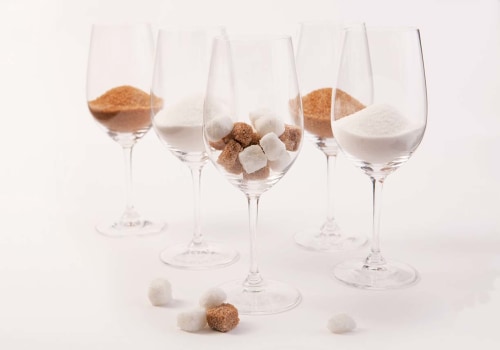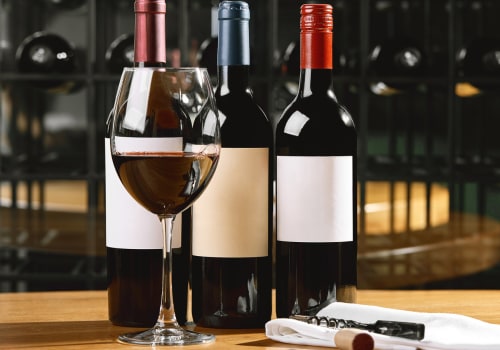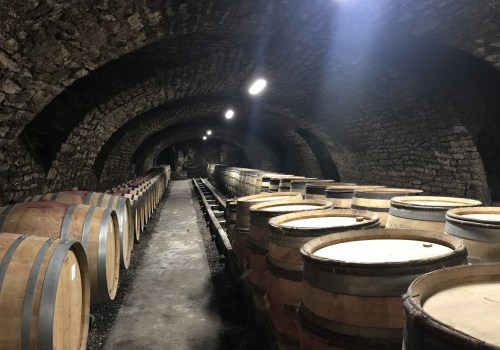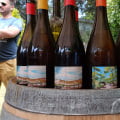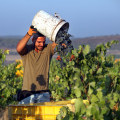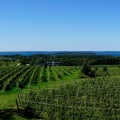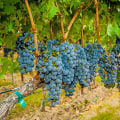Ice wine, or Eiswein, is a unique and sweet dessert wine made from grapes that have been left to freeze on the vine. In the United States, American varieties commonly used for iced wine in these regions include Riesling, Vidal Blanc, and Cabernet Franc. Iced wine can only be made in cold weather. Germany, Austria and Canada are currently the leaders in production. In the states, New York is the largest producer and produces a small amount in the Niagara Escarpment AVA (American Wine Area), and most of it comes from the Finger Lakes region, in upstate New York.
Many other European countries, in fact, any country that can withstand a cold winter, can make iced wine, and in fact they do. Unfortunately, with climate change, some traditional areas now have problems due to the unpredictability of the weather. But the positive side of this problem is that it allows other countries, including China, to start producing their own varieties of iced wine. He discovered iced wine as an aperitif in the Chicago area about 15 years ago, and he likes nothing more than to accompany it with bread pudding or a slice of lemon pie. When one of their vintages produced a harvest too small to be used in their usual wines, they made the decision to leave the grapes in the vineyard and try the iced wine.
Under the agreement, the three countries have committed themselves to making iced wine only in the traditional way, which is centuries old, allowing the grapes to freeze naturally on the vine, picking them by hand, one frozen grape at a time, and following the thorough winemaking described above. The future of ice wine may look different than it did in the past, but the desire to create this sweet and unique wine continues to inspire winemakers and delight wine lovers around the world. Warmer winters mean that, in some years, temperatures do not drop enough, or for long enough, to allow iced wine to be produced. In most years, iced wines from Canada tend to have a higher Brix (weight of must) than those from Germany. Instead of growing their own grapes in Woodridge, located about 48 kilometers west of Chicago, they buy and ferment the juice of Vidal Blanc grapes harvested and pressed at Arrowhead Vineyards, near Baroda, Michigan.
Coquard, now chief winemaker at the Wollersheim winery in Prairie Du Sac, Wisconsin, says that iced wine has been on the rise in the region for the past two decades. Unlike the grapes used to make other dessert wines such as Sauternes, Tokaji or Trockenbeerenauslese, iced wine grapes should not be affected by Botrytis cinerea or noble rot at least not to a large extent. It's worth noting that the entire process from vineyard to bottle is governed by strict regulations especially in regions that are famous for their iced wine production such as Germany and Canada. The typical grapes used for production of iced wine are Riesling considered noblest variety by German winemakers; Vidal very popular in Ontario (Canada); and red grape Cabernet Franc.It's worth noting that despite high sugar levels a well-made iced wine shouldn't be overwhelmingly sweet instead its sweetness and acidity should balance each other out resulting in a wine that's sweet yes but also crisp refreshing and deliciously drinkable. White ice wines tend to be pale yellow or light golden when young and may mature (taking on an intense amber-gold color) as they age. In other countries some winemakers use cryoextraction (mechanical freezing) to simulate effect of frost and generally do not leave grapes hanging for extended periods as is case with natural frozen wines. Austrian ice wine or “Eiswein” is mainly produced in Neusiedlersee region Burgenland which has perfect conditions for production of iced wine due to its long sunny summers and cold frosty winters.
In some cases wineries may need consider stopping producing iced wine or diversifying their offering to include other styles of wine. The world of ice wines is an exciting one - from Northwestern Louisiana all the way to Austria! Iced wines are unique dessert wines made from grapes left on vines until they freeze naturally. The process is centuries old and requires strict regulations for production. The most common grapes used are Riesling, Vidal Blanc and Cabernet Franc. In some cases wineries may need consider stopping producing iced wine or diversifying their offering due to climate change. In most years Canadian ice wines tend to have higher Brix levels than those from Germany.
New York is currently America's largest producer with most coming from Finger Lakes region. Other countries such as China are also beginning to produce their own varieties of ice wines. When made correctly these wines should not be overwhelmingly sweet but rather have a balance between sweetness and acidity resulting in a crisp refreshing drinkable beverage. White ice wines tend to be pale yellow or light golden when young but may mature into an intense amber-gold color as they age. Iced wines are becoming increasingly popular among winemakers and connoisseurs alike - so why not give them a try?.
